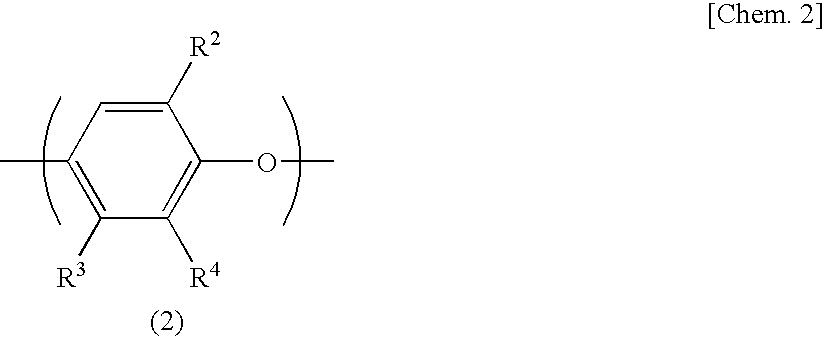Granulated Flaky Titanic Acid Salts, Process for Production Thereof, Resin Compositions Containing the Salts
a flaky titanic acid and salt technology, applied in the field of granular platy titanate, can solve the problems of deterioration of uniform dispersibility in resin matrix, deterioration of transportability and by extension workability, and deterioration of working environment, so as to reduce bridge and plugging, improve production environment, and reduce the effect of bridge and plugging
- Summary
- Abstract
- Description
- Claims
- Application Information
AI Technical Summary
Benefits of technology
Problems solved by technology
Method used
Image
Examples
synthesis example 2
Synthesis of Lithium Potassium Titanate
[0070]542.0 g of titanium oxide, 216.8 g of potassium carbonate and 41.2 g of lithium carbonate were mixed by an ordinary method to obtain lithium potassium titanate having an average major axis of 15 μm and a composition of K0.6Li0.27Ti1.73O3.9 in the same method as Synthesis Example 1.
synthesis example 3
Synthesis of Platy Potassium Octatitanate
[0071]154.6 g of lithium potassium titanate obtained in Synthesis Example 2 was dispersed in solution in which 1.57 kg of 70%-sulfuric acid was dissolved in 29.4 L of water, to obtain 5%-slurry. The slurry continued to be stirred by an agitating blade for approximately 5 hours, thereafter filtered, washed in water and dried to obtain platy titanic acid (H2Ti2O5). The whole amount of the obtained platy titanic acid was dispersed in solution in which 0.74 kg of 85%-potassium hydroxide was dissolved in 11.2 L of water, to obtain 10%-slurry. The slurry continued to be stirred by an agitating blade for approximately 5 hours, thereafter filtered, washed in water and dried at a temperature of 110° C. for 2 hours. Subsequently, this product was fired by an electric furnace at a temperature of 500° C. for 3 hours to obtain platy potassium octatitanate having an average major axis of 16 μm.
synthesis example 4
Synthesis of Composite Platy Calcium Titanate
[0072]Calcium carbonate and calcium chloride were ground by mixture at a blending ratio of 7:3 in molar ratio, and lithium potassium titanate obtained in Synthesis Example 2 was further blended therewith at a molar ratio of Ti:Ca=1.11:1 to obtain a mixture, which was sufficiently mixed in a mixer. This mixture powder was filled into an alumina crucible and fired in an electric furnace at a temperature of 800° C. for 5 hours. The obtained fired product was immersed in 0.1 N-nitric acid aqueous solution, and the soluble component was dissolved therein, thereafter separated by filtering off and dried to obtain composite platy calcium titanate having an average major axis of 14 μm and a composition ratio of Ti:Ca=1.12:1, such that 89% of crystalline CaTiO3 and 11% of noncrystalline TiO2 were compositely integrated.
PUM
| Property | Measurement | Unit |
|---|---|---|
| Percent by mass | aaaaa | aaaaa |
| Percent by mass | aaaaa | aaaaa |
| Angle | aaaaa | aaaaa |
Abstract
Description
Claims
Application Information
 Login to View More
Login to View More - R&D
- Intellectual Property
- Life Sciences
- Materials
- Tech Scout
- Unparalleled Data Quality
- Higher Quality Content
- 60% Fewer Hallucinations
Browse by: Latest US Patents, China's latest patents, Technical Efficacy Thesaurus, Application Domain, Technology Topic, Popular Technical Reports.
© 2025 PatSnap. All rights reserved.Legal|Privacy policy|Modern Slavery Act Transparency Statement|Sitemap|About US| Contact US: help@patsnap.com


